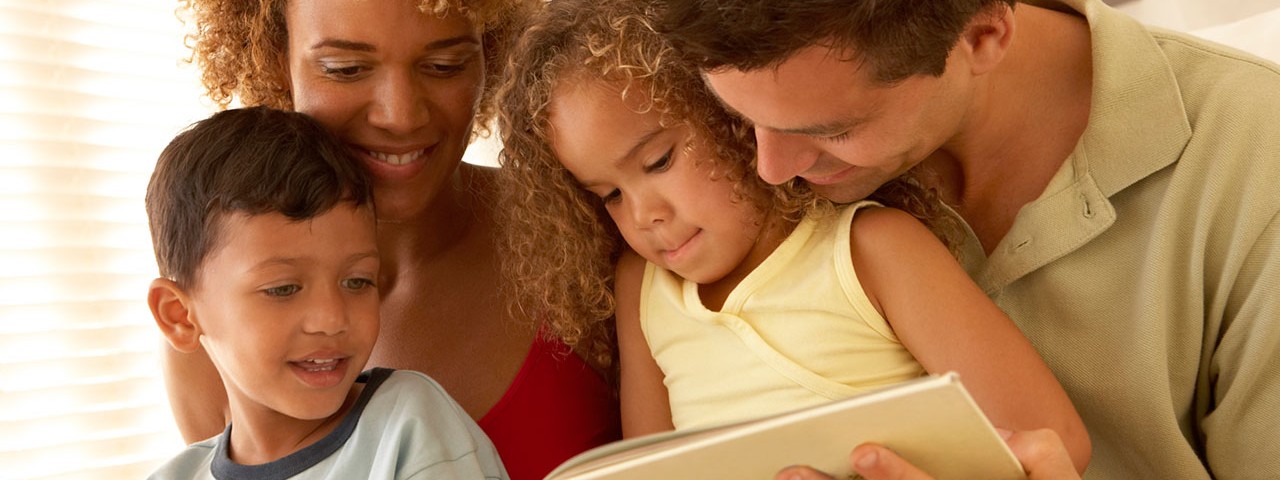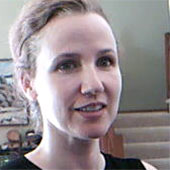A Great Way to Read to Your Kids
- Tweet

We hear it all the time: Read with your children. It can boost their vocabularies and prepare them for school. It may also advance their social skills, and lay the groundwork for learning to read on their own.
When you read with your kid, do you take the time to have a conversation? Tweet this!How does it work? Merely listening to somebody read might be helpful. But research suggests that most important advantages come from the give-and-take of a lively, interactive conversation. Kids benefit from talking about books and the ideas that books inspire.
Of course, talking to young children isn’t the same as talking to members of your local literary club. So the practical question is: What does an effective shared reading experience look like? It depends on the age of your child.
Book talk with babies: Repetition and improvisation
When you think about the jumble of sounds that babies encounter in everyday life, it’s amazing that children manage to learn to crack the code of language so rapidly.
In part, this feat depends on the natural accommodations we make when we address babies. Babies learn faster when we speak in a pleasant, attention-grabbing, melodic way, and use gestures to make our meaning clear. But babies’ brains also depend on statistical analysis — sifting through all the talk they’ve encountered to find recurring patterns.
For instance, if your baby notices that you say the same three words (“Look at the…”) whenever you point to an interesting object, she may use this verbal formula as a cue for learning new nouns. Whenever you use the expression, it will help her map new words to their meanings. And the more you repeat a word, the more familiar and memorable it becomes.
Given the value of repetition, you can see how reading and re-reading a favorite picture book can help babies learn. The old phrases are like road signs that help babies find their way.
But that doesn’t mean you should always stick to the same script. Not only is that boring for you, it misses important learning opportunities.
Instead, you can use familiar phrases to introduce new words. You can call your child’s attention to the details in a picture. (“Look at the bird in the tree.”) You can also ask simple questions (“Where is the bird?”) and encourage your child to touch or point at the relevant image on the page.
And don’t forget: This is a two-way “conversation.” Even if your baby isn’t talking yet, she will indicate her interests with her gaze, gestures, babbles and coos. When you respond to her interests, she’ll be more likely to view you as a reliable communication partner. She’ll also be more attentive and ready to learn.
Expanding the dialogue with your talking child
Around the age of two, many children can speak 50 words or more. The conversational give-and-take shifts into high gear, and may resemble an approach that educational psychologists call dialogic reading. What does it look like?
The official technique follows a set pattern described by the acronym PEER. You:
- PROMPT child to talk about a familiar book,
- EVALUATE his comments,
- EXPAND on what he says, and then get him to
- REPEAT your expanded statement.
For example, you might point to a picture of a bird ask your child, “What is this?” When he replies, “a bird,” you provide him with feedback, rephrasing and expanding on his answer.
“That’s right, it’s a red bird.”
Then you ask your child to repeat your more elaborate statement:
“Can you say, ‘red bird’?”
As your child’s language abilities develop, you can pose more open-ended questions (“What’s happening in this picture?”), and encourage him to make connections between the book and other things that interest him.
What are the rewards of such conversations?
In controlled studies, dialogic reading has been linked with better expressive language skills. But there is more.
Experiments suggest that showing preschoolers how books work — sounding out letters, pointing to words as we read them, demonstrating how we track words from left to right – gives kids an important head start for learning to read. There is also evidence that talking about the thoughts and feelings of characters helps children improve their understanding of other people’s minds.
But perhaps the most obvious benefit is immediate: Reading is fun. By sharing the joy of books, we set kids on a path toward independent, self-motivated learning.

